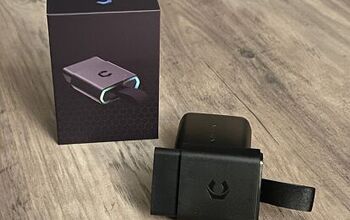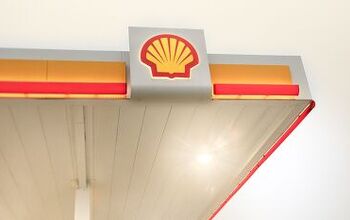The One Tiny Detail the Best Car Designers Obsess Over

When most people imagine automotive designers doing what they do, they picture creative types wearing thick-frame glasses and scarves sketching out cars or making clay models.
Pencils and sculpting tools are important, but there is one tool that gets a lot of use that the average person might not think about: A micometer, which is a tool for measuring tiny distances. This is because there is one tiny detail that best car designers obsess over, and it’s not something as obvious, sexy, or marketable as a grille design, headlight shape or character line; it’s panel gaps.
Lead Infiniti designer Alfonso Albaisa, who actually doesn’t wear thick frame glasses or scarves, opting instead for sharp and fitted three-piece suits, admits that he obsesses over tight panel gaps. And he’s not the only one — Audi designer Jakob Hirzel also mentioned the same preoccupation with keeping those panels close.
ALSO SEE: Top 5 Most Beautiful Cars that Inspire Infiniti’s Genius Designer
“What happens is people can’t articulate it, but if you don’t have [tight parting lines], the car feels noisy and messy,” Albaisa says. If a design is done well and the gaps look seamless, a car gives off a sense of luxury, quality and cohesiveness, but if the gaps are uneven or too big, people will automatically feel that something is off, even without being able to pinpoint why.
When asked about his favorite design element of the swoopy Infiniti Q60, Albaisa emphasized how important tight panel gaps were, and how closely engineering and design worked together to give the coupe’s panels “very, very deep stamping, because it helps maintain tight parting lines.” In regular person speak, deep stamping means thinner and more precise body panels, which isn’t an easy thing to achieve, especially when working with sheetmetal as curvy as an Infiniti’s.
This is a problem car designers face because people want sexy cars with curves and not straight lines, and curves make it more difficult to create tight panel gaps, especially when you consider that a car’s body needs to have space between its panels so that doors, trunks and hoods can swivel to open and close freely.
“Our body sculpting is very, very tight,” Albaisa says, noting that the panel gaps in the Q60 are no bigger than 3.6 millimeters wide, which he says is “best in the business.”
Engineers and designers are typically at odds, but the fact that they were able to collaborate to have panel gaps in the Q60 (and the pretty QX50 Concept) that were too small to measure with a regular ruler is a huge accomplishment. He also points out how the Q60’s doors articulate when opening and closing and how that gap gets even smaller to less than a millimeter, looking like a sheet of paper wouldn’t be able to slide through.
That kind of precision is nearly unheard of in the automotive industry, and it’s one of the little reasons why Infiniti is the one to watch when it comes to designing beautiful cars.

Jodi has been obsessed with cars since she was little and has been an automotive journalist for the past 12 years. She has a Bachelor of Journalism from Ryerson University in Toronto, is a member of the Automobile Journalists Association of Canada (AJAC), and a jury member for the prestigious North American Car/Truck/Utility Vehicle of the Year (NACTOY). Besides hosting videos, and writing news, reviews and features, Jodi is the Editor-in-Chief of AutoGuide.com and takes care of the site's day-to-day operations.
More by Jodi Lai


































Comments
Join the conversation